Blend Curves#
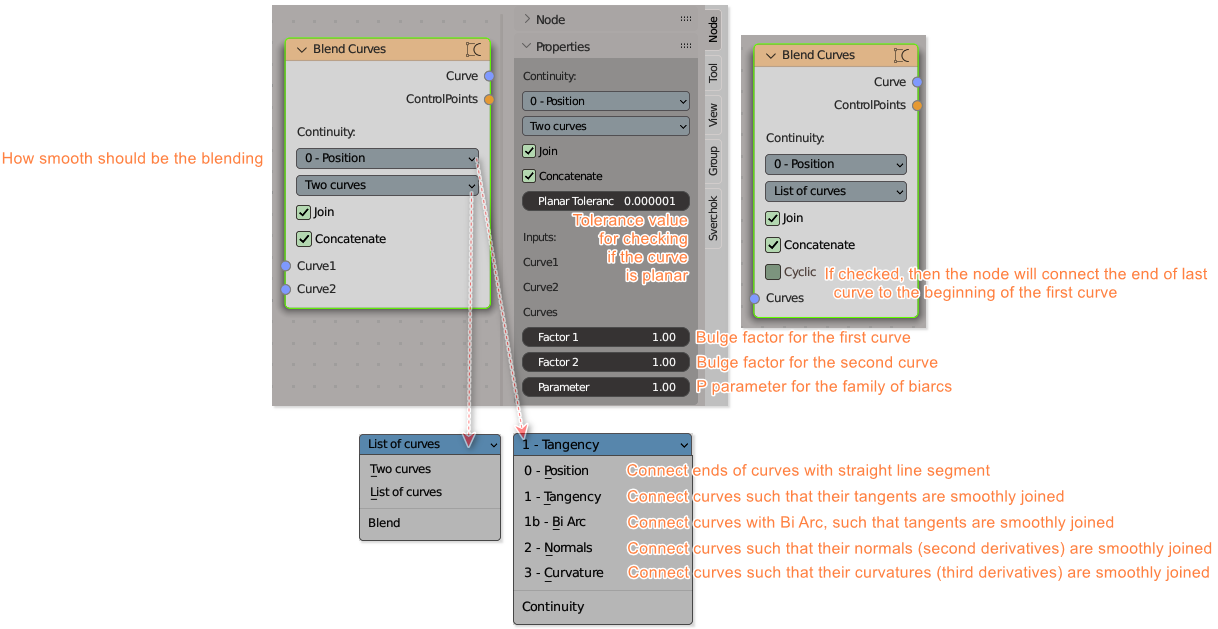
Functionality#
This node takes two or more Curve objects, and connects them by adding new curve(s) in the middle, to generate a smooth blending. For example, the end of the first curve is connected to the beginning of the second curve. Generated blending curves are Bezier curves. It is possible to define how smooth the connection between initial curves and blending curve(s) should be.
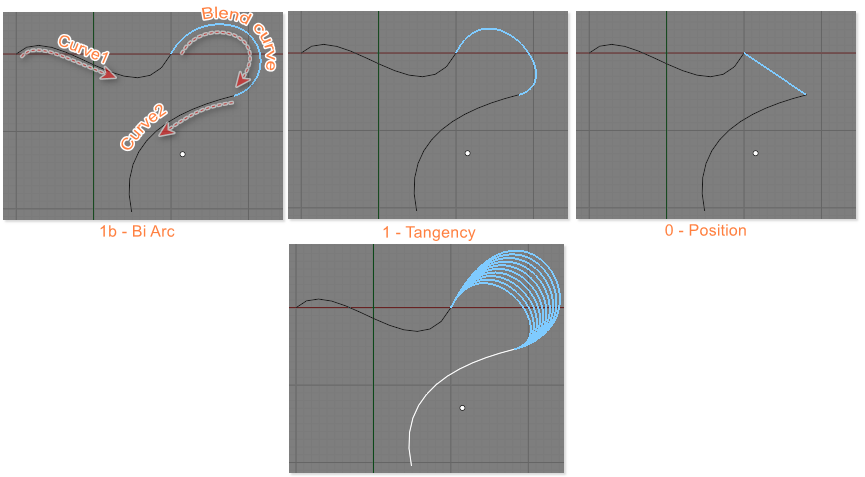
Inputs#
This node has the following inputs:
Curve1. First curve to be blended. This input is available and mandatory only if Blend parameter is set to Two curves.
Curve2. Second curve to be blended. This input is available and mandatory only if Blend parameter is set to Two curves.
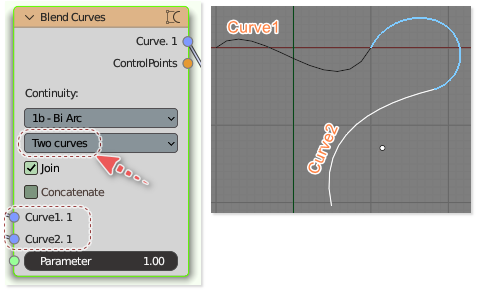
Curves. List of curves to be blended. This input is available and mandatory only if Blend parameter is set to List of curves.
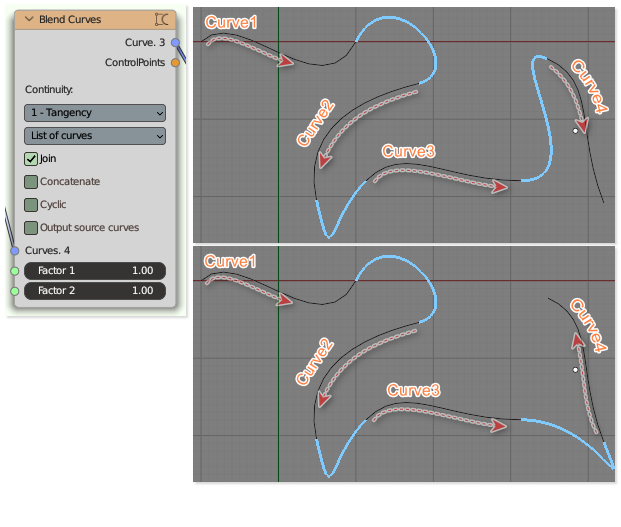
Factor1. This input is available and mandatory only if Blend parameter is set to Two curves, and Continuity parameter is set to Tangency. This defines the strength with which the tangent vector of the first curve at it’s end point will affect the generated blending curve. The default value is 1.0.
Factor2. This input is available and mandatory only if Blend parameter is set to Two curves, and Continuity parameter is set to Tangency. This defines the strength with which the tangent vector of the second curve at it’s starting point will affect the generated blending curve. The default value is 1.0.
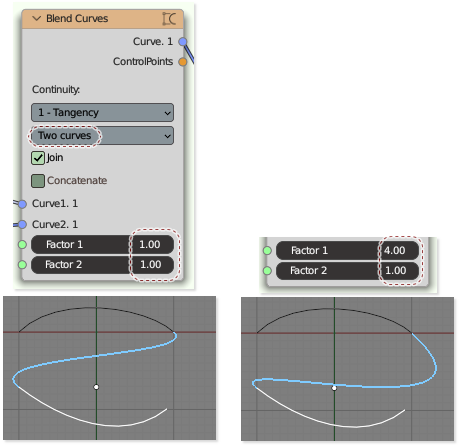
Parameter. This input is available only if Continuity parameter is set to BiArc. This defines the value of P parameter of the family of biarc curves, that are generated as blending curves. The default value is 1.0.
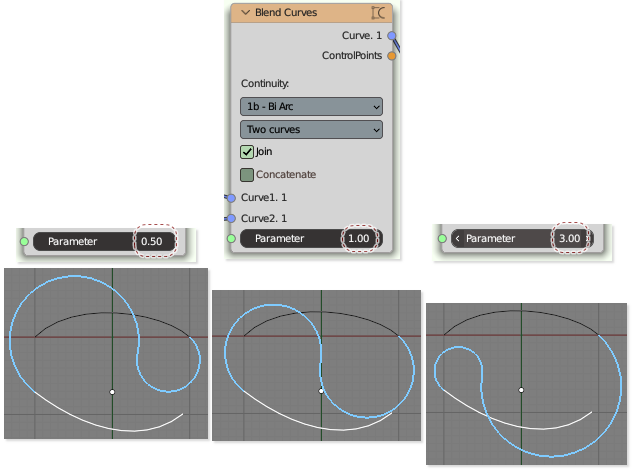
Parameters#
This node has the following parameters:
Continuity. This defines how smooth the connection between initial curves and generated blending curves should be. The available options are:
C0 - Position. Blending curve starts at the end of first curve and ends at the beginning of the second curve, but no attempts are made to make these connections smooth. As a result, the blending curve is always a segment of a straight line.

G1 - Tangency. The blending curves are generated so that the tangent vectors of the curves are equal at their meeting points. The generated curves are cubic Bezier curves.

G1 - Bi Arc. The blending curves are generated as biarc curves, i.e. pairs of circular arcs; they are generated so that the tanent vectors of the curves are equal at their meeting points.

C2 - Smooth Normals. The blending curves are generated so that 1) tangent vectors of the curves are equal at the meeting points; 2) second derivatives of the curves are also equal at the meeting points. Thus, normal and binormal vectors of the curves are equal at their meeting points. The generated curves are Bezier curves of fifth order.

C3 - Smooth Curvature. The blending curves are generated so that 1) tangent vectors of the curves are equal at the meeting points; 2) second and third derivatives of the curves are also equal at the meeting points. Thus, normal and binormal vectors of the curves, as well as curvatures of the curves, are equal at their meeting points. The generated curves are Bezier curves of order 7.

G2 - Curvature. This means continuous curvature. Curvature comb rim line is continuous, but not smooth. In this sense, this mode is similar to “C2 - Smooth Normals” mode. But with G2 mode, the blending curve does not go so far from touching points as in C2 or C3 mode.

The default value is 1 - Tangency.
Blend. These defines how the curves to be joined are provided. The available options are:
Two curves. The node will blend two curves, which are provided in inputs Curve1 and Curve2, correspondingly.
List of curves. The node will blend arbitrary number of curves, which are provided in the Curves input.

The default value is Two curves.
Concatenate. If checked, then the node will output all initial curves together with generated blending curves, concatenated into one curve. Otherwise, original curves (optionally) and generated curves will be output as separate Curve objects. Checked by default.

Cyclic. This parameter is available only when the Blend parameter is set to List of curves. If checked, then the node will connect the end of last curve to the beginning of the first curve. Unchecked by default.

Output source curves. This parameter is available only when the Blend parameter is set to List of curves, and Concatenate parameter is not checked. If Output source curves is enabled, then the node will output original curves in single list with generated blending curves - for example,
[Original curve 1; Blending curve 1; Original curve 2; Blending curve 2; Original curve 3]. Otherwise, the node will output generated blending curves only. Checked by default.
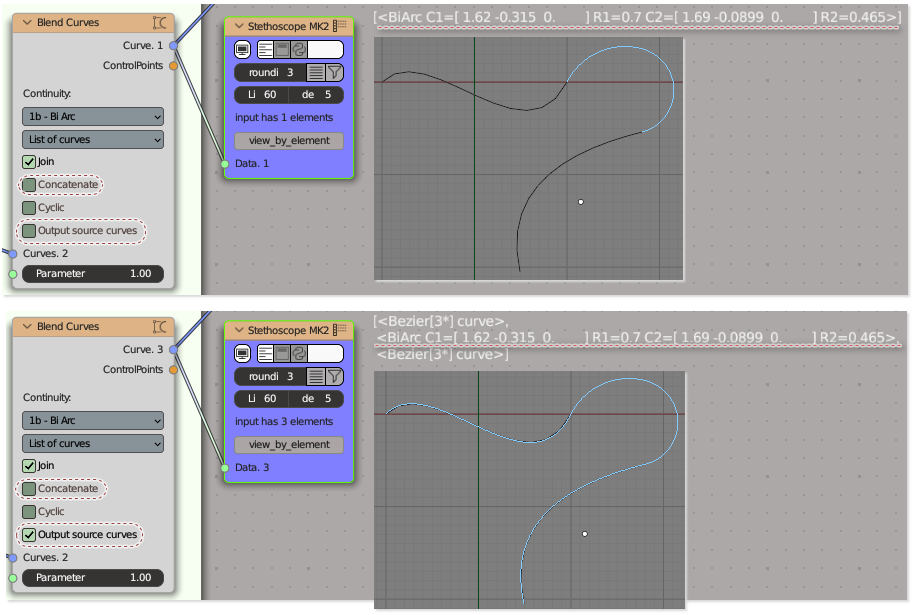
Outputs#
This node has the following outputs:
Curve. The generated curve (or list of curves).
ControlPoints. Control points of all generated blending curves.
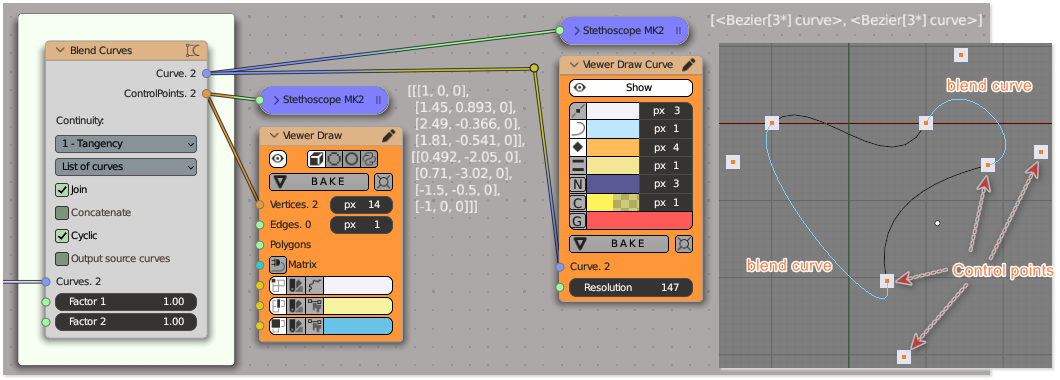
Example of usage#
Generate two cubic curves from mesh objects (one of them is white - selected, another is black - unselected); and blend them together with a smooth curve:
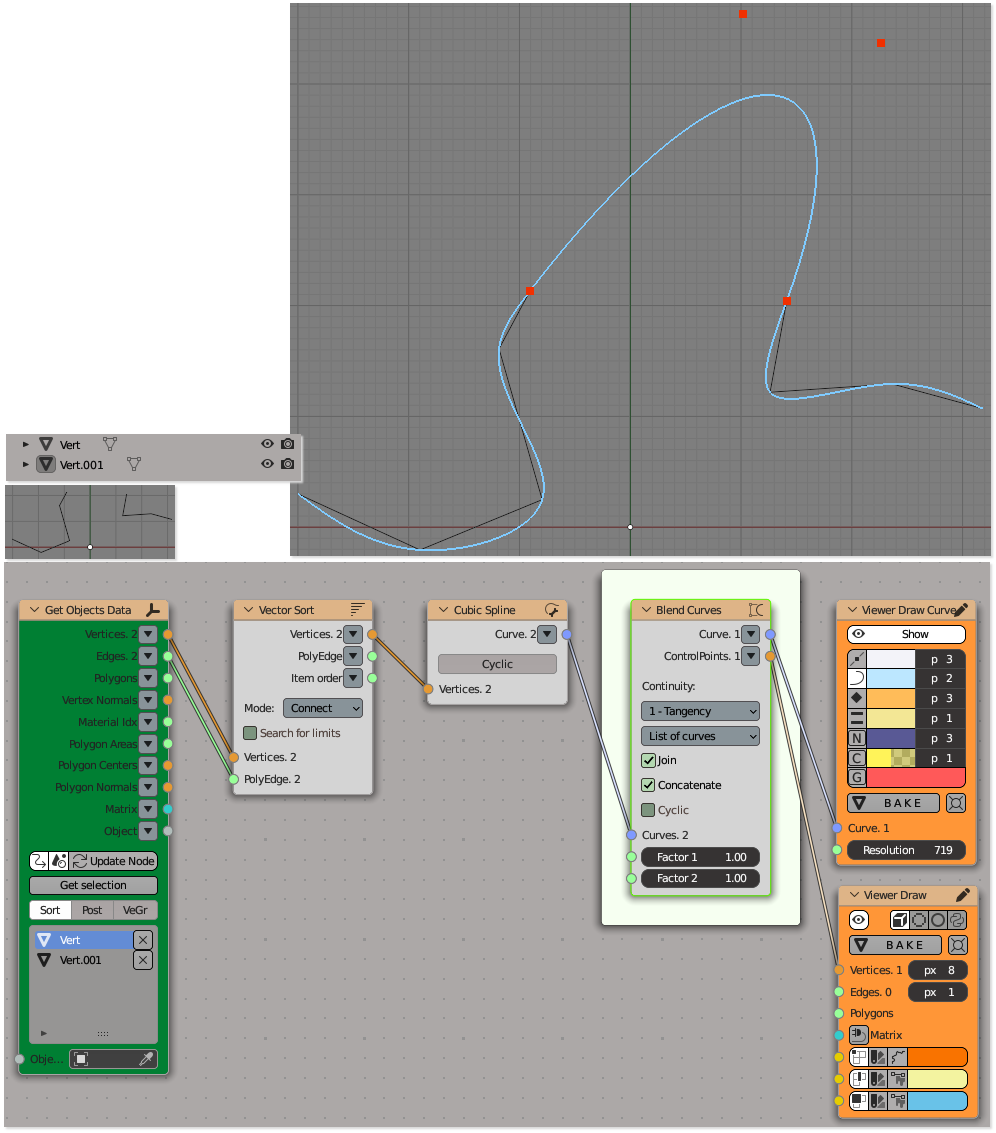
Curves-> Cubic Spline
Vector-> Vector sort
Viz-> Viewer Draw
Viz-> Viewer Draw Curve
Scene-> Get Objects Data
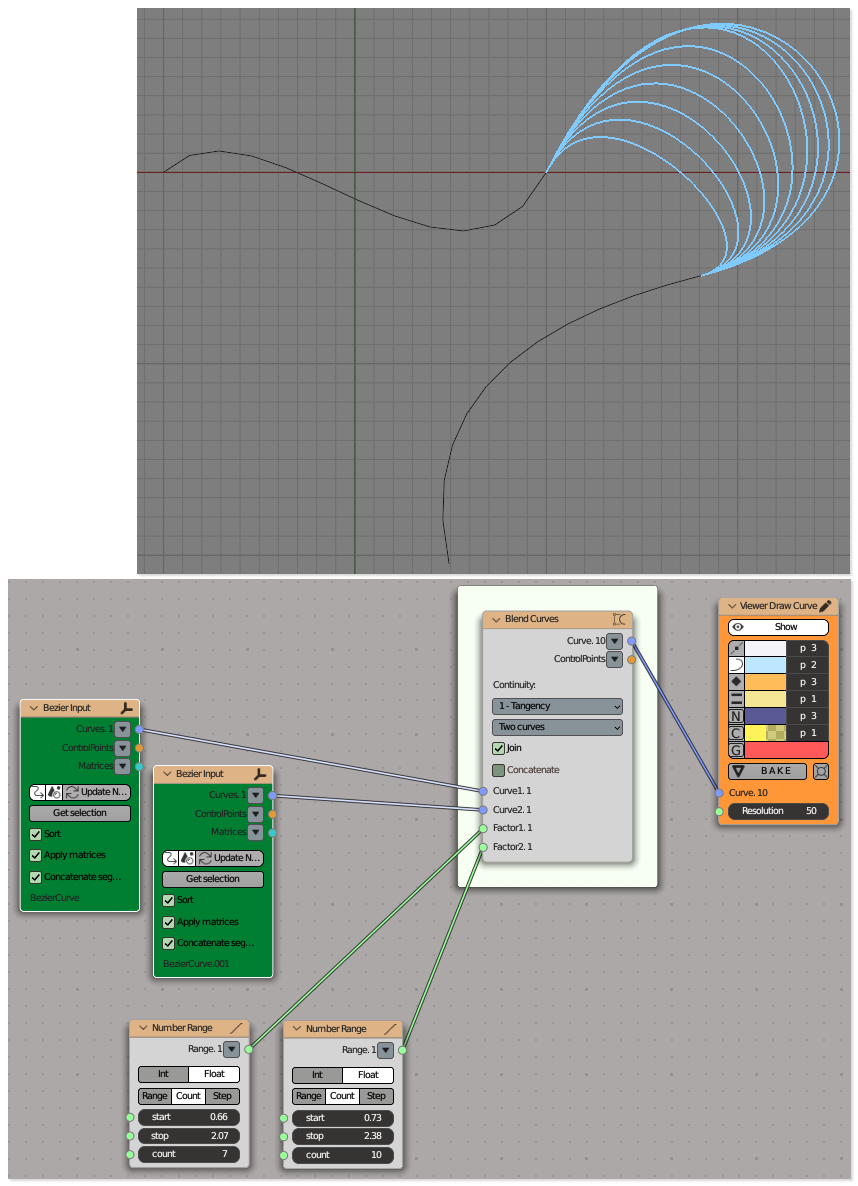
Number-> Number Range
Viz-> Viewer Draw Curve
Scene-> Bezier Input
Cycle one curve
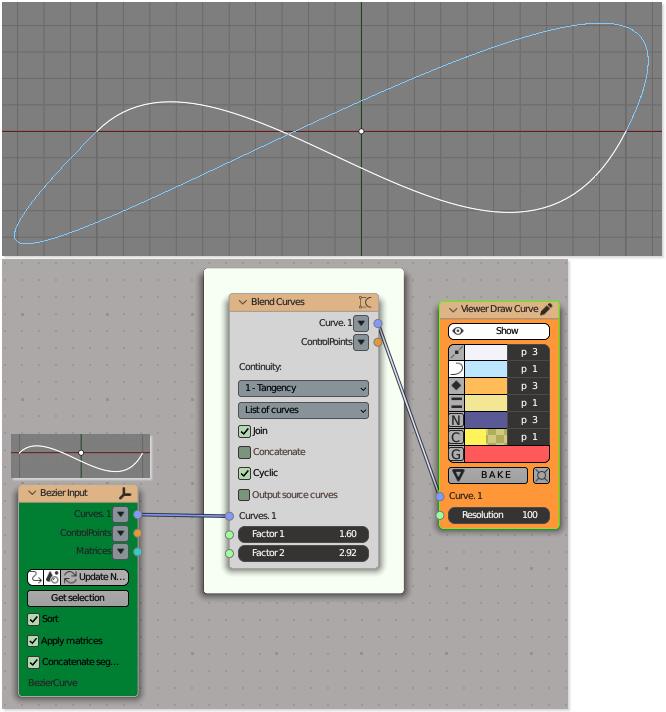
Scene-> Bezier Input
Viz-> Viewer Draw Curve